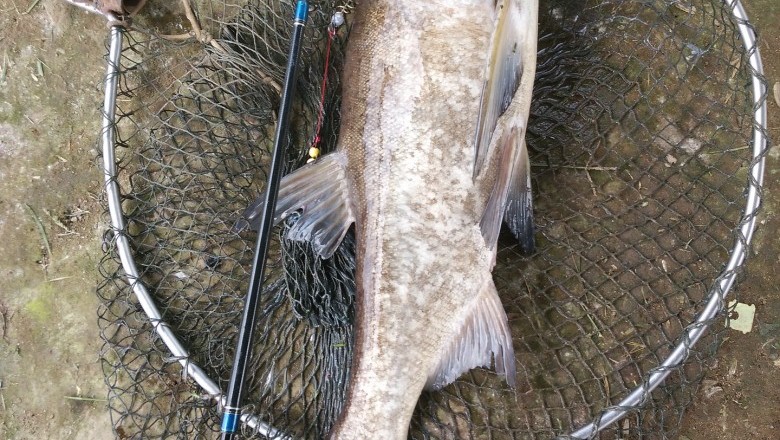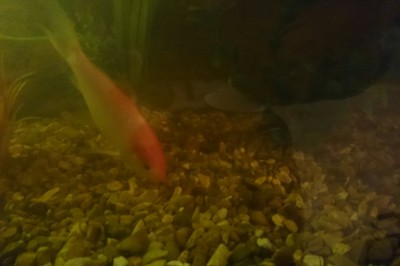
Homemade Carp Bait Recipes For Fishing Beginners!
Carp fishing is so addictive! Many carp fishing beginners would love to make their own homemade baits so here are a few proven carp bait recipes and some solid advice to give you a big fish start; from a bait maker of 30 years experience!When you quickly realise as a beginner that carp will at least sample almost anything used as bait to a degree, even inedible items like a cork ball or a rubber fake piece of sweetcorn, you might wonder where to begin. There may appear to be no definitive answer except probably beginning with thinking like a fish and not like an angler!
You will find that doing this will give you huge advantages over your fish and very many competitive advantages over fellow anglers who do not appreciate this vital aspect of carp fishing so much!It is very true that most foods humans eat will usually be fine as carp baits with many being outstanding having a long proven record of success. When you are thinking of making a homemade bait for carp, the popular baits used for decades make a great point to start from. I will get back to thinking like a carp in a moment.
Most new anglers know worms catch fish. But there is more power in this statement than most carp anglers will appreciate! Famous UK carp angler Kevin Maddocks used very many bait formulas on the road to becoming successful. His success is also well known to be attributable very much to his outstanding ability and competitiveness as an angler. He did many trials of bait substances on captive carp in a tank in his house.But by probably at the zenith of his fame (upon the publication of his Carp Fever book,) he was very keen to promote worm extracts in particular... It might seem that he went full circle and actually ended up using basically the same bait a complete novice fisherman would use logically to guarantee success?
Perhaps he realised that those substances carp that carp are naturally familiar with and most confidently feed upon, that have highly stimulating nutritional benefits to carp, providing essential dietary requirements too, are one of the most logical avenues of bait substances to exploit?Many bait enthusiasts have seriously gone down the route of researching proteins sources, amino acids and peptides, how they are detected by carp, and how they are digested even.
However, under actual fishing conditions, despite years of trials, relatively few absolute conclusions about what is actually top of the list of substances to be used in carp baits have been reached. But why is there almost a fixation among most carp anglers with protein levels in particular, used in their baits.If farming for profit is your goal, then things are much simpler, and a balanced complete pelleted diet food source with a biologically digestible protein content usually ranging from above 25 to 45 percent, for example, is well proven to produce profitable carp growth rates for fish farmers.
Carp have a basic essential dietary requirement for nitrogen and a variety of amino acids of various forms and carp need these rather than whole proteins per se according to many leading fish science sources. Carp are very sensitive to the water soluble elements of proteins and many other substances in solution, such as mineral salts. These and others certainly induce various intensities of feeding behaviours, and differing rates of feeding, or at least bring carp into range of your carp bait, in an excited mode of behaviour.
The more you can get your carp to actually at least mouth your baits, the higher your chances of hooking one! Many anglers get confused about protein in attracting carp and the ideal protein type of bait profiles used to feed carp, using a modern balanced diet in farming for profit. The 2 are not identical, and in fact there are many other substances that induce intense feeding responses in carp.
The amino acids from whole protein ingredients in carp baits, such as caseins or fish meals for example are very significant indeed in the evolution of carp baits, especially in the UK for instance. (In this example a whole protein is one that is yet to be part or fully broken down by any process, such as enzyme treatment.)Free form water soluble amino acids do not appear to be as well utilised as whole proteins in trial carp diets for example, that test growth rates, mass and protein content of growing farmed carp under test conditions.
Most carp anglers are now familiar with the fact that most carp baits provide carp with at least a minimal quantity of amino acids or these essential natural protein building blocks. Even baits made from very low protein ingredients such as many plant sources, like wheat or maize flour have proved very successful, and bread rates as one of the best of all time, despite a relatively poor protein content compared to so many other baits.
Now you might be getting to see that although amino acids, nitrogen and protein are important, they are not solely the only thing on the planet that catches carp very well, so you can open your mind and relax again! You can catch carp on bits of rubber, or wood, and these obviously work on more carp senses than simply chemical orientated curiosity of carp.
A long list of simple baits can be made for carp going back centuries, from wasp grubs, slugs and snails, to honey bread paste, and many exotic baits most anglers would never even dream of. When you consider that partly boiled potatoes were once rated highly as carp bait on a rig consisting of a hook to line, with nothing else added, you can see how things have changed in the present day. In fact this bait and rig was recommended by a nationally honoured carp fishing pioneer by the name of Fred J. Taylor, and his recommendations were among some of my first introductions to carp fishing and baits, early in the seventies.
But do not get me wrong, fishing like anything evolves as carp habits do in response to carp anglers hooks and baits. It was Fred who really started the popularisation of using sweetcorn for carp fishing in the UK. There have been many occasions when modern baits have required some previous introduction into a carp water, before good results can be expected and so-called pre-baiting is a valuable tool in carp angling.
But if your want to keep everything simple, then trying a natural bait in a slightly changed form can reap instant catch results.But using natural live baits, like worms, maggots, or even at times, hemp seed or sweetcorn, can end up catching you lots of smaller fish instead of the bigger ones you are so keen to catch, at least initially.So what you might like to use is a bait that will remain intact long enough to be selective much more for carp to a higher degree. Most carp anglers have heard of dough or pastes being used for carp bait, but more often today, baits produced as boilies are most common and these dissolve and break down in water far less quickly than dough or paste baits.
Protein has been mentioned as a carp diet essential, but this needs to be balanced by a proportion of energy providing carbohydrate food too.Luckily for us, there are very many carbohydrate foods easily within our grasp at very little cost that we can use for effective baits. Starch is one of the energy store forms of carbohydrates and like sugar, is soluble in water, so it is well detectable by carp. In nature, starch is the natural energy source of many things. Starch is found in fruits, tubers and rhizomes (think potatoes or tiger nuts,) grasses like wheat and oats, buckwheat, and hulled cereals like groats, to seeds like maize, sweetcorn, sesame seed, rice and hempseed, to beans and peas for example.
We are taught that carbohydrates are great for humans, cereals, rice and tubers are the sources of the staple energy and minimal nutrient providing foods of most cultures around the world (corn, wheat, potatoes and rice.) Starch is a form of glucose (long chains of glucose molecules,) and both humans and carp digest and use starches to form glucose in the bloodstream for the fuel to live. But carp do differ to humans in regards to carbohydrate and protein needs for instance, but I wont go into that here.
Although starch is a stiffening agent used in many foods, it is the high protein gluten part conjoined with starch that most glues carbohydrate foods and ingredients together. This mixture of soluble starch and gluey high protein gluten is ideal for making baits. All you have to think of is a basic ingredient like semolina or soya bean meal or flour. Semolina is a sticky very hard particle form of wheat flour ideal for use as a bait binding ingredient and as a flavour carrier. Soya flour like wheat flour has a long history in cheap carp bait making.
Soya has provides carp and humans with a far better nutritional profile compared to wheat, especially in regards protein content and the stimulatory as well as and essential amino acid profile it offers. Together they offer a very simple basic carp bait that carp recognise as edible which you can use as a basis to develop into many other bait recipe forms and experiments.
The fifty percent semolina and fifty percent soya flour type bait recipe, with an added attractor such as a flavour or sweetener substance that has started off so many carp bait makers, world-wide. As the basic combination of soya flour and semolina is able to be recognised and utilised as food by carp, you can work on adding other ingredients, additives, liquids etc, to boost attraction and bait success and prolonged longevity. You can make paste or dough using this mixture and use it straight away.
Adding sugar and salt in moderation as you might in making bread for example obviously adds more for fish to get excited about. Beginners can use a recipe like this one below to successfully make a simple dough or paste mixture, that can also be boiled in water after making marble size balls out of it for example, to produce boiles:8 ounces (or around 500 grammes) of semolina.8 ounces (or around 500 grammes) of soya flour.4 to 6 large hen eggs (Preferably as fresh as possible; this is very significant.)2 to 5 millilitres of a proprietary concentrated carp fishing flavour.1 to 2 millilitres of a proprietary liquid intense sweetener.
Perhaps add a table spoon of blackstrap molasses or yeast extract or both to help nutritional attraction or even a proprietary vitamin and mineral compound, or Minamino for instance.Add a heaped teaspoon of edible proprietary bait dye.Usually the best thing to do is clear a table or work surface where you will not contaminate your own foods with bait nor get any contamination in your baits from your working environment!
You might choose to use a round mixing bowl and fork specifically set aside for your bait making use. But if you can, do this initial mixing part at least using a kitchen mixing or blending machine for quicker easier results. First crack your eggs into your container, your egg protein will help bind your mix and help to produce skinned resilient boilies. Add your liquids next, i.e. your flavour (or flavours,) sweetener, and molasses and (or) yeast extract. You can add your dye to the liquids or add it to your dry flour powders, its your choice.
This mix must be very thorough to efficiently disperse your liquid components evenly as possible.The simplest way to mix a small amount of flours together is to weigh out your flours and put them into a strong plastic bag. Next tighten the top of the bag and blow into it like you would when blowing up a balloon.
Now proceed to really shake those powders until they are very well evenly mixed. This is all standard stuff and to be honest, there are very many alternative methods and much faster and labour removing options that can be used these days, but anyway, this route is proven to work by hundreds of thousands of carp anglers. All you do now is transfer your flour gradually while still mixing it into the liquid all the time, until a firm dough is formed.
Like anything, you will soon speed up and getting the consistency correct for any mix takes a little practice and experience in actually doing it, just like making bread dough does.If your mix is not pliable enough to be moulded because it is too dry, carefully add a mixture of the liquids you have already put together. If your mix is too wet, add more dry powders. Now your bait is ready. If you want to make boilies, usually you would roll your baits into small balls or random pieces and boil them in water for a few minutes a handful at a time, then dry on paper or towels, then bag-up to store in the fridge or freezer.This recipe and bait making procedure is about as simple as you can get but by definition is the most labour intensive way and there are many short-cuts you can make!
Also such carbohydrate baits are a very long way from maximum of carp bait design by exploiting those vital fish senses, but they work on most waters in most carp fishing situations. Often when used in larger quantities these cheap baits can be very effective, usually for limited periods of time, for carp of all sizes. This is a bait that can get you some big-time beginners luck in your carp fishing, and even get you thinking just how much better you can make your baits; and I know you will be extremely surprised!
It will cost you very little to multiply your catches for life when you find and utilise the right bait information (just look a little further on...)By Tim Richardson.
Now why not seize this moment to improve your catches for life with: "BIG CARP FLAVOURS AND FEEDING TRIGGER SECRETS!" "BIG CARP AND CATFISH BAIT SECRETS!" And "BIG CARP BAIT SECRETS!" for much more please visit: http://www.baitbigfish.com These unique homemade bait making and enhancing fishing secrets guides are very well proven cutting-edge tools for success for anglers just like you in 46 countries!
































